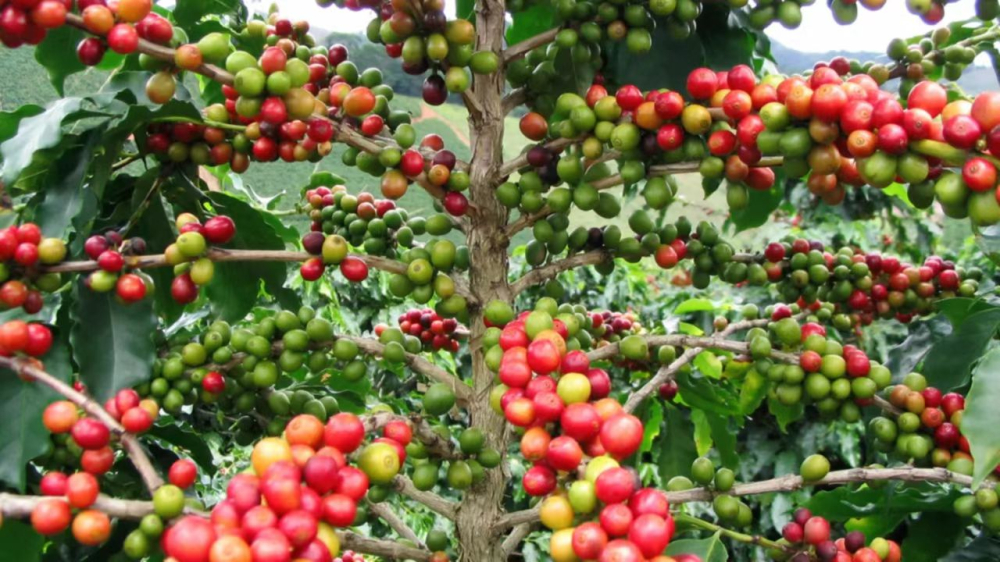What are the reactions during coffee roasting? What do caramel reactions and Maillard reactions refer to?
Before the coffee beans are roasted: the work that must be done is to make the water content inside the raw coffee beans more evenly distributed, which is why the raw beans are put in the warehouse after processing. Only coffee beans with a moisture content of about 12% and a stable state can be exported in coffee trade. Only when the water content of raw beans is uniform can the heat conduction and overall water evaporation be more uniform.
Coffee beans are roasted: there are many chemical changes in the coffee roasting process, and the heated coffee will release its unique aroma like an elf. After coffee is roasted, the beans are brownish in color because of chemical changes in amino acids, chlorogenic acid and sugary substances.
In the process of baking, a large amount of carbon dioxide and water vapor are produced, and the bean cells are rapidly dehydrated and weightless, the density is reduced, and the volume expands. After complex degradation and polymerization, more than 800 chemical components are derived, of which 1/3 are aromatic elves.
Raw beans will change in two stages after baking.
1 physically = > volume, density, volume
2 chemically = > smell, taste, taste
The violent reactions of coffee beans during high temperature baking include Mena reaction (Maillard reaction), caramelization reaction (Caramelization), Stryker degradation reaction (Strecker degradation), and pyrolysis of various sugars, amino acids and lipids. The aroma of coffee is produced by combining the results of these reactions. Different raw beans, different composition, different baking aroma.
Caramelization-carbohydrates or sugars in coffee beans are caramelized at 170-205 degrees Celsius (consistent with the explosion time of coffee beans). After sucrose dehydration, moisture and carbon dioxide are released, and the color of sucrose changes from colorless crystallization to brown. Caramelization gives rise to hundreds of important aromatic substances.
Maillard reaction-proteins account for 11% of the weight of raw beans, and the amino acids that make up proteins also produce important Maillard reactions in coffee roasting. Maillard reaction is not a single chemical reaction, but a series of complex degradation and polymerization of amino acids and reducing sugars such as glucose, fructose, lactose and maltose in the process of continuous heating.

Important Notice :
前街咖啡 FrontStreet Coffee has moved to new addredd:
FrontStreet Coffee Address: 315,Donghua East Road,GuangZhou
Tel:020 38364473
- Prev

Introduction to the Grade characteristics of Katim Coffee varieties description of flavor and taste of Yunnan Katim coffee beans
Katim small seed coffee, belongs to Katim high generation variety, medium dwarf plant, vigorous growth, stable secondary characters, crown top bud tender leaves emerald green, whole leaf color dark green, plant shape columnar, short internodes, many branches, exuberant growth, wide adaptability, strong drought resistance, a certain degree of cold resistance, under medium management level.
- Next

I can't stand the stomach, but I can't quit the coffee addiction, and these methods can save you.
Professional coffee knowledge exchange more coffee bean information Please pay attention to coffee workshop (Wechat official account cafe_style) Coffee is a popular beverage around the world, but also has certain health benefits to the human body. It contains antioxidants, may be a major source of polyphenols in many diets, and it has been shown to reduce the risk of type 2 diabetes.
Related
- Beginners will see the "Coffee pull flower" guide!
- What is the difference between ice blog purified milk and ordinary milk coffee?
- Why is the Philippines the largest producer of crops in Liberia?
- For coffee extraction, should the fine powder be retained?
- How does extracted espresso fill pressed powder? How much strength does it take to press the powder?
- How to make jasmine cold extract coffee? Is the jasmine + latte good?
- Will this little toy really make the coffee taste better? How does Lily Drip affect coffee extraction?
- Will the action of slapping the filter cup also affect coffee extraction?
- What's the difference between powder-to-water ratio and powder-to-liquid ratio?
- What is the Ethiopian local species? What does it have to do with Heirloom native species?

